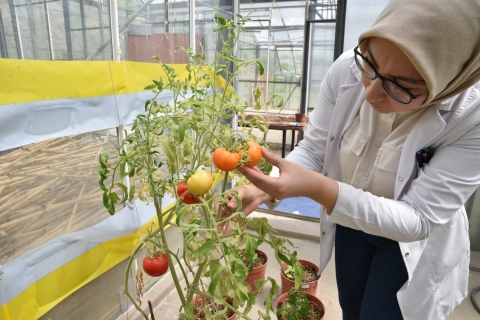OMU Will Produce Animal Feed from Hemp Waste
Ondokuz Mayıs University (OMU) aims to increase meat and milk production efficiency while reducing methane emissions through animal feed from post-harvest hemp waste.
The project, titled "Evaluating the Feed Value of Silage Made from Hemp Waste and Total Mixed Ration Silages Using In Vitro and In Vivo Methods and its Effects on Enteric Methane Production with a Shotgun Metagenome Approach," is led by Prof. Dr. Ünal Kılıç from the OMU Faculty of Agriculture's Department of Animal Science. It has been accepted under the TÜBİTAK 1001 Scientific and Technological Research Projects Support Program.
The 36-month project includes OMU faculty members Prof. Dr. Mehmet Akif Çam, Prof. Dr. İsmail Kaya, Prof. Dr. İsmet Boz, Assoc. Prof. Dr. Levent Mercan, and Director of the OMU Hemp Research Institute Prof. Dr. Selim Aytaç. Additionally, Prof. Dr. Mustafa Boğa from Niğde Ömer Halisdemir University is participating as a consultant. Four students at the undergraduate and graduate levels are also involved in the project.
“We Plan to Utilize Hemp as an Additive,” Says Prof. Dr. Kılıç
Prof. Dr. Ünal Kılıç, in a conversation with an AA correspondent, mentioned that during the harvest of the hemp plant, some parts are discarded. He noted that these parts of hemp could contribute to increased milk production in ruminant animals and reduce methane gas emissions. "It was necessary to assist our breeders by supporting their animal diets with strategies that reduce methane production. We thought hemp could be used in this context," Kılıç said.
Kılıç emphasized that reducing methane production isn't solely achievable by using hemp. "We are considering utilizing hemp as a feed additive. Even in small amounts, hemp can reduce methane production in feed and transfer the energy, otherwise wasted in feed, to improve the animal’s performance, meat, and milk yield. By reducing animal methane production, we can combat global warming and achieve significant gains through more efficient feed utilization," he explained.
“High in Protein Value”
Kılıç also highlighted the multiple uses of the waste produced after hemp harvest, known as 'kıtık.' "Our preliminary studies found that when used as feed, it has a high protein value, and its nutritional value is higher than straw. We thought that even when used in certain amounts, it could yield higher performance than straw alone," he added.
Assoc. Prof. Dr. Levent Mercan from the Faculty of Agriculture's Department of Agricultural Biotechnology discussed examining the effect of hemp waste-derived feed on animals. "We will check if feeding animals with these feeds reduces the variety of microorganisms and methane production in the rumen fluid obtained from their stomachs."
Mercan emphasized the pioneering nature of their work in Turkey. "We will analyze how adding hemp to the feed affects the microorganisms in the rumen fluid samples at a molecular level. The internal environment of the rumen consists of many identified and unidentified organisms. Our goal in this study is to molecularly identify some microorganisms that we assume have not been identified before."
Mercan also shared that their project aims to observe changes in animals after being fed hemp-containing diets, intending to determine the trends in changes of the microorganisms and other biomolecules in the existing rumen content.



















